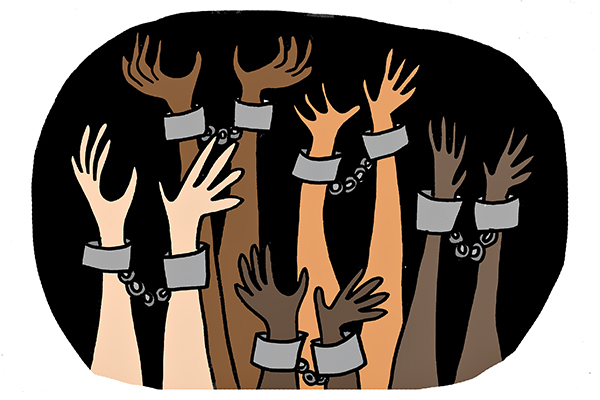Victims of child sex trafficking are often difficult to identify, a UT study has revealed.
The study, finalized in March, examined current sexual exploitation cases to develop new strategies to identify future victims, said Dixie Hairston, research project manager for the Institute on Domestic Violence and Sexual Assault.
“On the outside, everything might look fine, but no one can really know what is going on inside,” Hairston said. “There is a range of exploitation that minors and youth experience that maybe don’t make them identifiable or recognizable to healthcare providers or law enforcers.”
The study aimed to expand the number of victims who can be helped by law enforcement and healthcare professionals by providing more comprehensive data on sex trafficking. Researchers quantified the rate and extent of victimization, traced life cycles of exploitation and suggested new intervention strategies for law enforcers.
“There is a checklist of signs that are helpful in identifying youth that are experiencing the most severe forms of exploitation, but we found that there are ways to identify sexual exploitation in youth that may not be as easily found by legal definitions,” Hairston said.
The study was sponsored by the Office of Gov. Greg Abbott and just concluded the second half of its four-year timeline.
“The first two years of the study looked at the prevalence of sex trafficking and exploitation in high-risk regions across the state of Texas,” Hairston said. “We found that there are 314,000 individuals that are exploited through labor and sex trafficking throughout Texas at any time. (Of those), there are 79,000 that suffer through sex trafficking (under the age of 25), and we wanted to dive into that number in the second part of the study.”
Hairston guided more than 400 interviews with minors and youth who were victims of sex trafficking to analyze and identify risk factors that might contribute to the complex system.
“Of the 466 participants, 46 of them participated in an extended interview where we explored the history of sexual or violent abuse and homelessness,” Hairston said.
Hariston said the biggest goal of the study is to help law enforcement and healthcare providers develop more accurate tools or strategies to identify victims of sex trafficking.
Social work freshman Jamie Li, a volunteer for Free the Captives — a non-profit that provides care for trafficking victims — said the conclusions from the study are important for better combating sex trafficking.
“Human trafficking is super relevant because a lot of people trafficked are college students or can be younger,” Li said. “Even in my hometown, Sugar Land, there were pimps searching for victims in high school.”
Nutrition sophomore Christy Lee, who said she is interested in helping address sex trafficking issues, said the first step to helping stop sex trafficking is to learn more about it.
“Many victims cannot escape the system because they end up believing that is all they’re worth or capable of, and getting involved with local organizations, volunteering, or raising money can be ways to help rescue victims and restore their dignities,” Lee said.





















